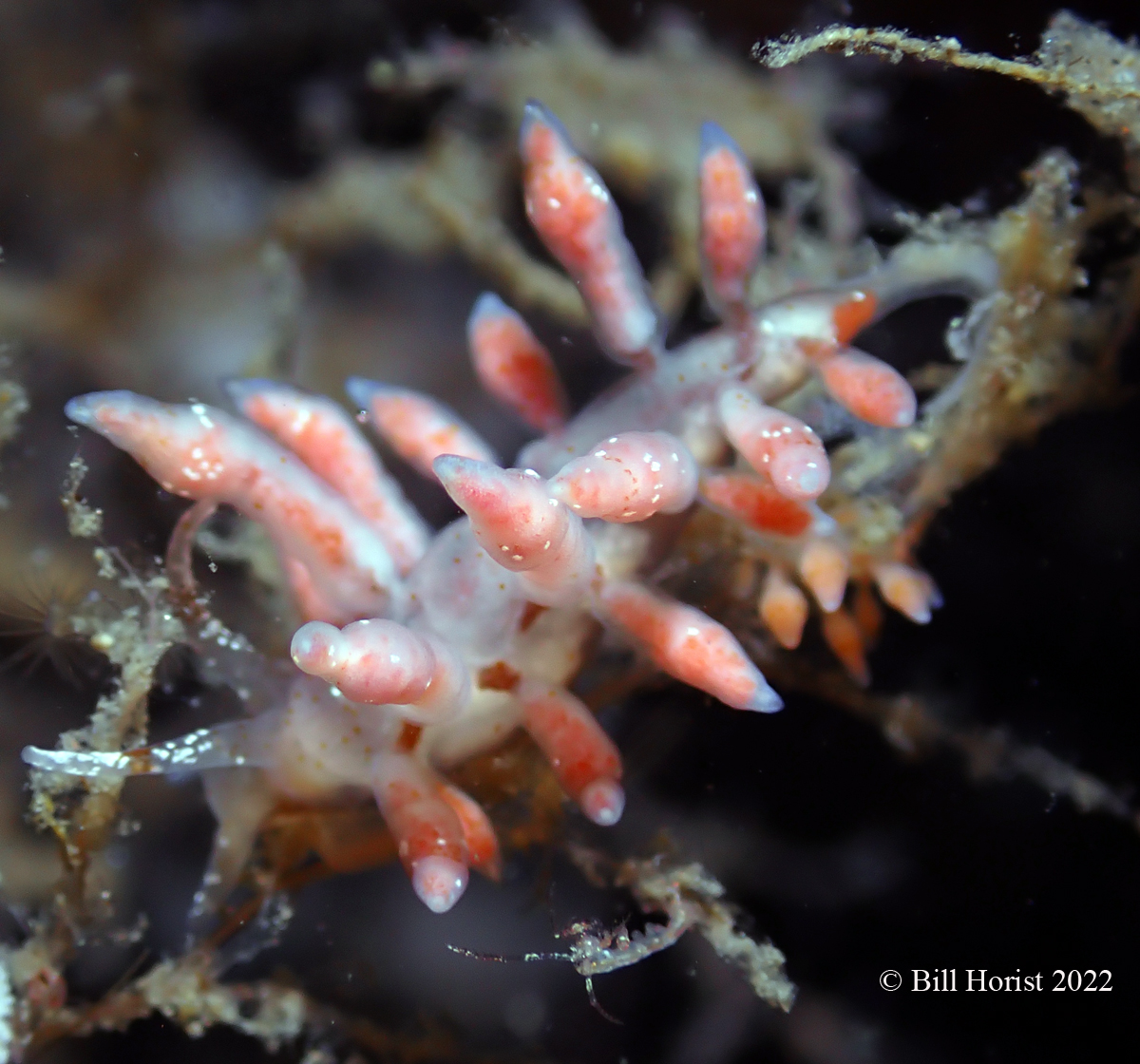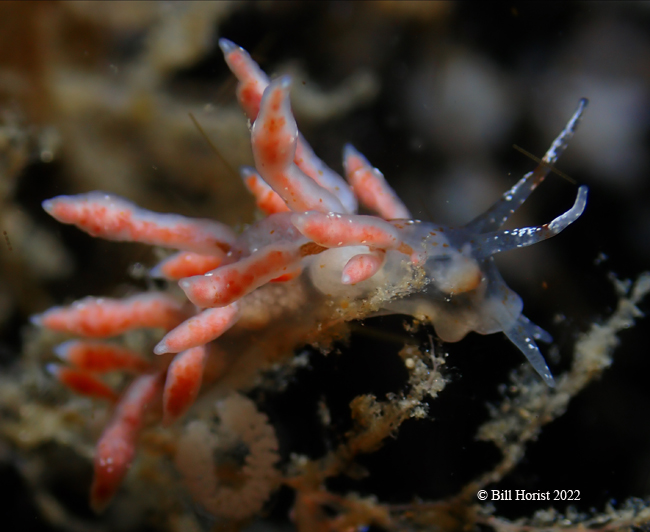 |
Eubranchus cf. rupium
Image courtesy of Bill HoristCove 2 in West Seattle, Washington
 | Eubranchus cf. rupium (Moller, 1842) Which Eubranchus am I??? Check out this interesting critter. I immediately thought it was a new species and was surprised it had gone undiscovered living in such a popular dive spot as Cove 2 in West Seattle. Having shared Bill's photos with a couple of Branch afficionados some interesting discussions erupted. The consensus seems to be that this a likely a color variation of Eubranchus rupium (Moller, 1842)(Courtesy of Bill Rudman's Sea Slug Forum). Now some of you who are more in the know are saying, no can't be E. rupium, which was described from the Atlantic, it must be E. olivacues (O'Donoghue, 1922), named from the northwestern Pacific. Well, my coauthors of the new revision of Nudibranchs and Sea Slugs of the Eastern Pacific (Front Cover/Back Cover) spent quite some time trying to determine which of these two we actually have here. Karin Fletcher carefully sorted the specifics and with the help of genetic analysis we decided to run with Eubranchus rupium. That said, Bill's critter really doesn't jump right out at me as being E. rupium. Although it matches the written description of E. rupium, it doesn't really match any of the photos I have seen from around here, and certainly not the ones we are using in the new book revision. Aside from the red ceratal cores, the subapical rings of tiny red then white specks on the cerata, look very different for the spots on all the specimens I have seen. Jeff Goddard points out "I'm pretty sure this is just a color variant of what we have been calling the outer coast form of E. olivaceus (Bill Rudman's Sea Slug Forum), which is characterized by its reddish and white spots on the body and rhinophores and dark digestive gland visible through the body wall. Specimens from Obelia on docks etc. In the Salish Sea are typically much paler, but still have the reddish and white spots. These match O'Donoghue's 1922 description and resemble E. rupium, a name we used for a while, but which I believe was shown to be different genetically (which Karin has shown). The only difference in Bill's image is the color of the cerata cores, which I would attribute to diet until convinced otherwise." Well, now you have it all. Which do you think it is, E. rupium, E. olivaceous or a new species? I am still unsure. In any event a great new observation adding to our knowledge of these little slugs along this coast. Thanks, Bill, for sharing |
MolluscaBase eds. (2022). MolluscaBase. Eubranchus rupium (Moller, 1842). Accessed through: marinespecies.org
Sammamish, WA 98074
June., 2022
Send Dave email at davidwbehrens@gmail.com
Image courtesy of Bill Horist

Bill Horist is a Seattle-based musician and educator. Since 1995, he has been an active performer and composer in many different genres of music, with an emphasis on experimental and the avant-garde. He has played hundreds of shows throughout North and Central America, Europe and Japan and has appeared on over 100 recordings in addition to work in film, video games and modern dance. In 2014, he rekindled his childhood fascination with the marine environment and began scuba diving in the Salish Sea. He also began volunteering at the Seattle Aquarium. In June of 2021 he began taking underwater photos with a focus on macro - with which he finds a certain kinship to his work in avant-garde music. He considers himself an artist who often likes to dress up as a biologist.
MUSIC - www.billhorist.net
Send Bill email at flattopbix@gmail.com |

|
